
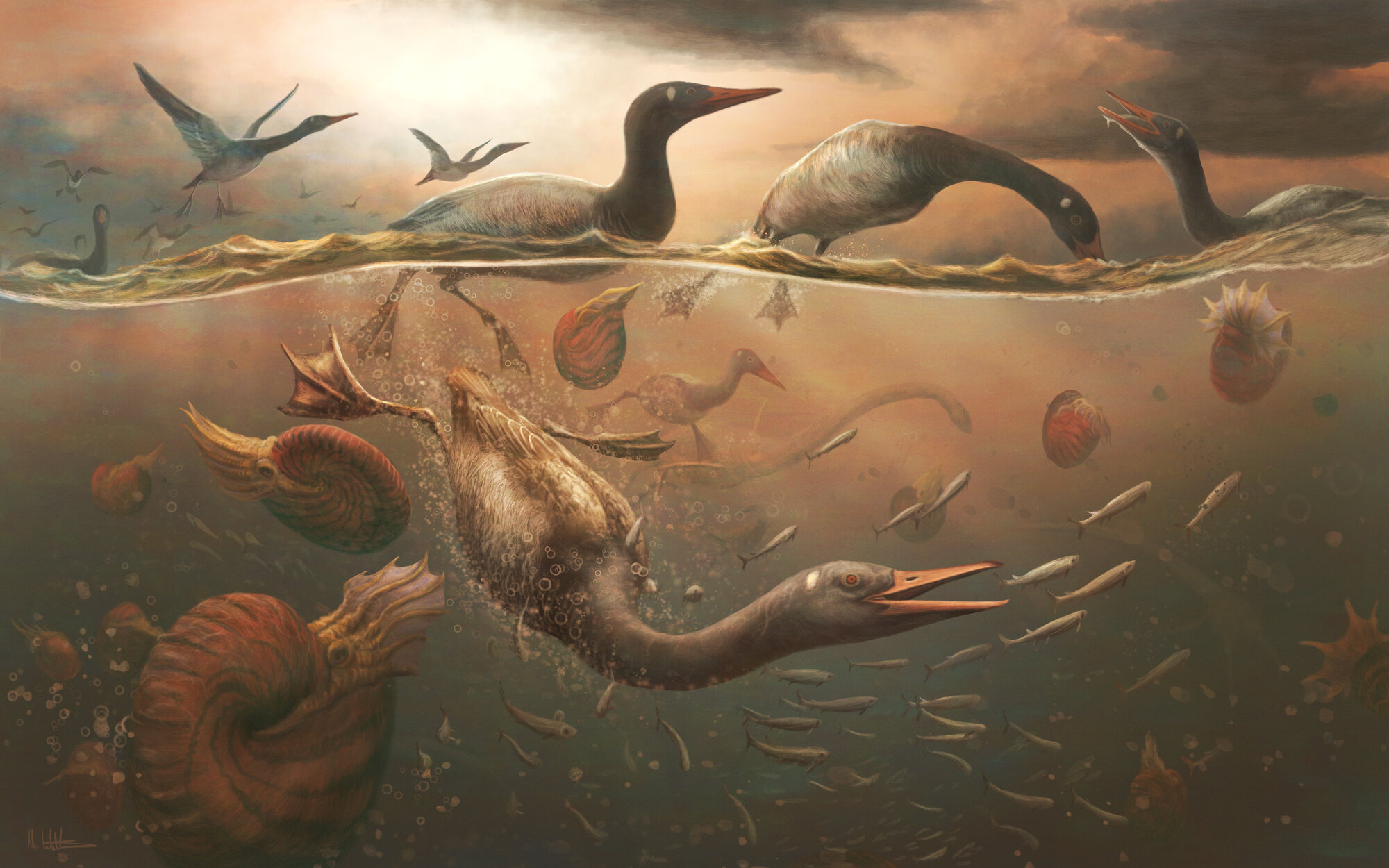
Cretaceous fossil from Antarctica reveals earliest modern bird
Team led by National Science Foundation Postdoctoral Fellow at Ohio University’s Heritage College of Osteopathic Medicine discovers new clues that delve into the age-old question: Does a duck always look like a duck and quack like a duck?
February 7, 2025
Share:
Sixty-six million years ago, at the end of the Cretaceous Period, an asteroid impact near the Yucatán Peninsula of Mexico triggered the extinction of all known non-bird dinosaurs. But for the early ancestors of today’s waterfowl, surviving that mass extinction event was like … water off a duck’s back. Location matters, as Antarctica may have served as a refuge, protected by its distance from the turmoil taking place elsewhere on the planet. Fossil evidence suggests a temperate climate with lush vegetation, possibly serving as an incubator for the earliest members of the group that now includes ducks and geese.
A paper published Feb. 5 in the journal Nature describes an important new fossil of the oldest known modern bird, an early relative of ducks and geese that lived in Antarctica at around the same time Tyrannosaurus rex dominated North America. The study was led by Christopher Torres during his time as a National Science Foundation (NSF) Postdoctoral Fellow at Ohio University’s Heritage College of Osteopathic Medicine.
The fossil, a nearly complete, 69-million-year-old skull, belongs to an extinct bird named Vegavis iaai and was collected during a 2011 expedition by the Antarctic Peninsula Paleontology Project. The new skull exhibits a long, pointed beak and a brain shape unique among all known birds previously discovered from the Mesozoic Era, when non-avian dinosaurs and a bizarre collection of early birds ruled the globe. Instead, these features place Vegavis in the group that includes all modern birds, representing the earliest evidence of a now widespread and successful evolutionary radiation across the planet.
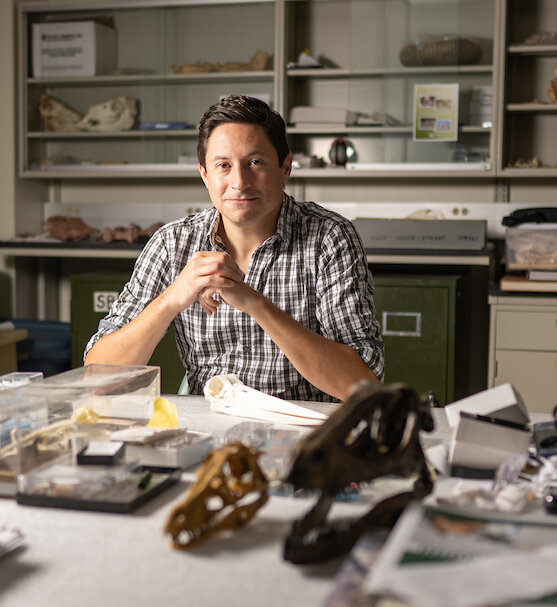
Christopher Torres, former NSF Postdoctoral Research Fellow at Ohio University and lead author of the paper describing a new skull of the 69-million-year-old bird, Vegavis iaai, that once inhabited the shallow oceans off the coast of present-day Antarctica. Credit: Ben Siegel, BSVC '02 (Ohio University), 2021
“Few birds are as likely to start as many arguments among paleontologists as Vegavis,” said lead author Torres, now a professor at University of the Pacific. “This new fossil is going to help resolve a lot of those arguments. Chief among them: where is Vegavis perched in the bird tree of life?”
Vegavis was first reported 20 years ago by study co-author Julia Clarke of the University of Texas at Austin and several colleagues. At that time, it was proposed as an early member of modern (also known as crown) birds that was evolutionarily nested within waterfowl. But modern birds are exceptionally rare before the end-Cretaceous extinction, and more recent studies have cast doubt on the evolutionary position of Vegavis. The new specimen described in this study has something that all previous fossils of this bird have lacked: a nearly complete skull.
This new skull helps lay that skepticism to rest, preserving several traits like the shape of the brain and beak bones that are consistent with modern birds, specifically waterfowl. Unlike most waterfowl today, the skull preserves traces of powerful jaw muscles useful for overcoming water resistance while diving to snap up fish.
These skull features are consistent with clues from elsewhere in the skeleton, suggesting that Vegavis used its feet for underwater propulsion during pursuit of fish and other prey—a feeding strategy unlike that of modern waterfowl and more like that of some other birds such as grebes and loons.
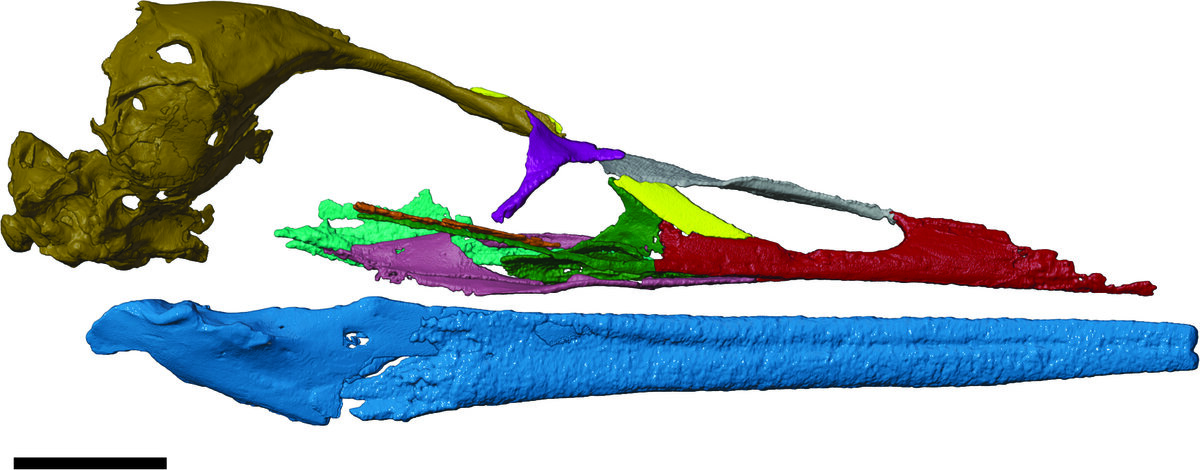
Digital reconstruction of the Late Cretaceous (~69 million years old) crown bird Vegavis iaai that was completed following high-resolution micro-computed tomography of a fossil-bearing concretion discovered on Vega Island, Antarctic Peninsula. Credit: Joseph Groenke (Ohio University) and Christopher Torres (University of the Pacific), 2025.
“This fossil underscores that Antarctica has much to tell us about the earliest stages of modern bird evolution,” said Patrick O’Connor, co-author on the study, professor at Ohio University, and director of Earth and Space Sciences at Denver Museum of Nature & Science. Birds known from elsewhere on the planet at around the same time are barely recognizable by modern bird standards. Moreover, most of the handful of sites that even preserve delicate bird fossils yield specimens that are so incomplete as to only give hints to their identity, as was the situation with Vegavis until now.
“And those few places with any substantial fossil record of Late Cretaceous birds, like Madagascar and Argentina, reveal an aviary of bizarre, now-extinct species with teeth and long bony tails, only distantly related to modern birds. Something very different seems to have been happening in the far reaches of the Southern Hemisphere, specifically in Antarctica,” O’Connor noted.
How the Antarctic landmass helped shape modern ecosystems in deep time is a topic of active research by scientists from around the world. Indeed, according to study co-author Matthew Lamanna of Carnegie Museum of Natural History, “Antarctica is in many ways the final frontier for humanity’s understanding of life during the Age of Dinosaurs.”

A typical day in field camp on Vega Island near the Antarctica Peninsula. Credit: Jin Meng (American Museum of Natural History), 2016.
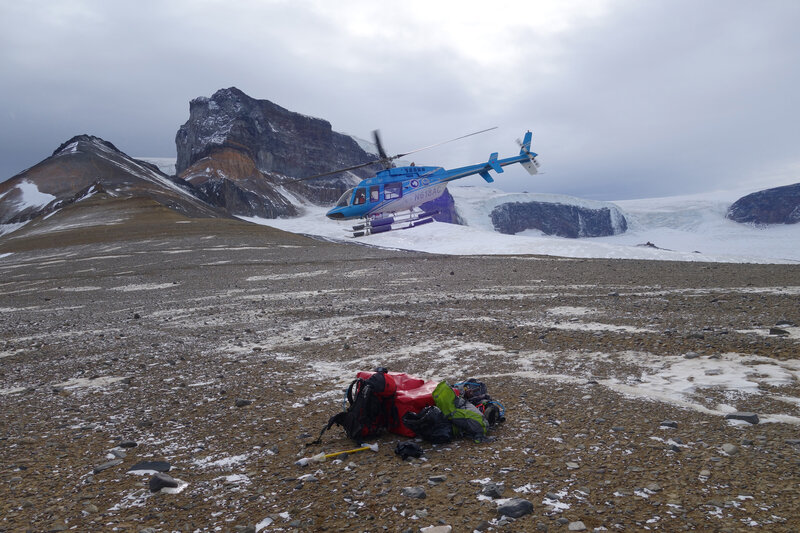
Helicopter drop off to conduct geological and paleontological survey of Late Cretaceous strata on Vega Island, Antarctic Peninsula. Credit: Patrick O’Connor (Ohio University), 2016.
Torres was supported at Ohio University for three years by the NSF Postdoctoral Fellowship Program, working on a project examining the relationship between bird diversification and resilience to extinction through the combined lenses of ecology, brain anatomy, and other life history traits. He is now in his first year as an assistant professor in the Department of Biological Sciences at University of the Pacific in Stockton, California.
"This discovery exemplifies the power of scientific research and the crucial role our institution plays in advancing knowledge about Earth's deep history,” said Ohio University President Lori Stewart Gonzalez. “This research not only enhances our understanding of early bird evolution, but also highlights the invaluable contributions of OHIO graduate students and postdoctoral researchers who are at the forefront of these expeditions. It is through these global, expeditionary efforts—whether in the field or in the lab—that we can truly grasp the dynamic changes our planet has undergone over millions of years. This study is a prime example of real-world experiential learning that connects STEM education with hands-on, transformative research, preparing the next generation of scientists to tackle the challenges of the future."
“Large-scale projects like this one, involving students and postdoctoral researchers, prepare the scientists of tomorrow to collaborate, advance science and tackle the biggest questions facing our planet,” O’Connor added.
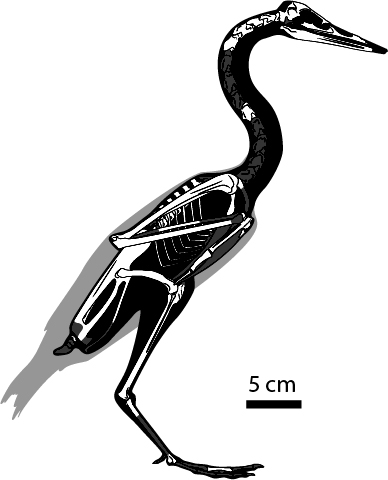
Skeletal reconstruction of the Late Cretaceous (~69 million years old) crown bird Vegavis iaai. Preserved bones of the skull and skeleton depicted in white. Credit: Christopher Torres (University of the Pacific), 2025.
Other co-authors of the study include Joseph Groenke (Ohio University), Ross MacPhee (American Museum of Natural History), Grace Musser (University of Texas at Austin and Smithsonian National Museum of Natural History) and Eric Roberts (Colorado School of Mines). This work was funded by the NSF grants DBI-2010996 to Torres, NSF ANT-1142104 to O’Connor, NSF ANT-1141820 to Clarke, NSF ANT-1142129 to Lamanna, and NSF ANT-0636639 and NSF ANT-1142052 to MacPhee.


